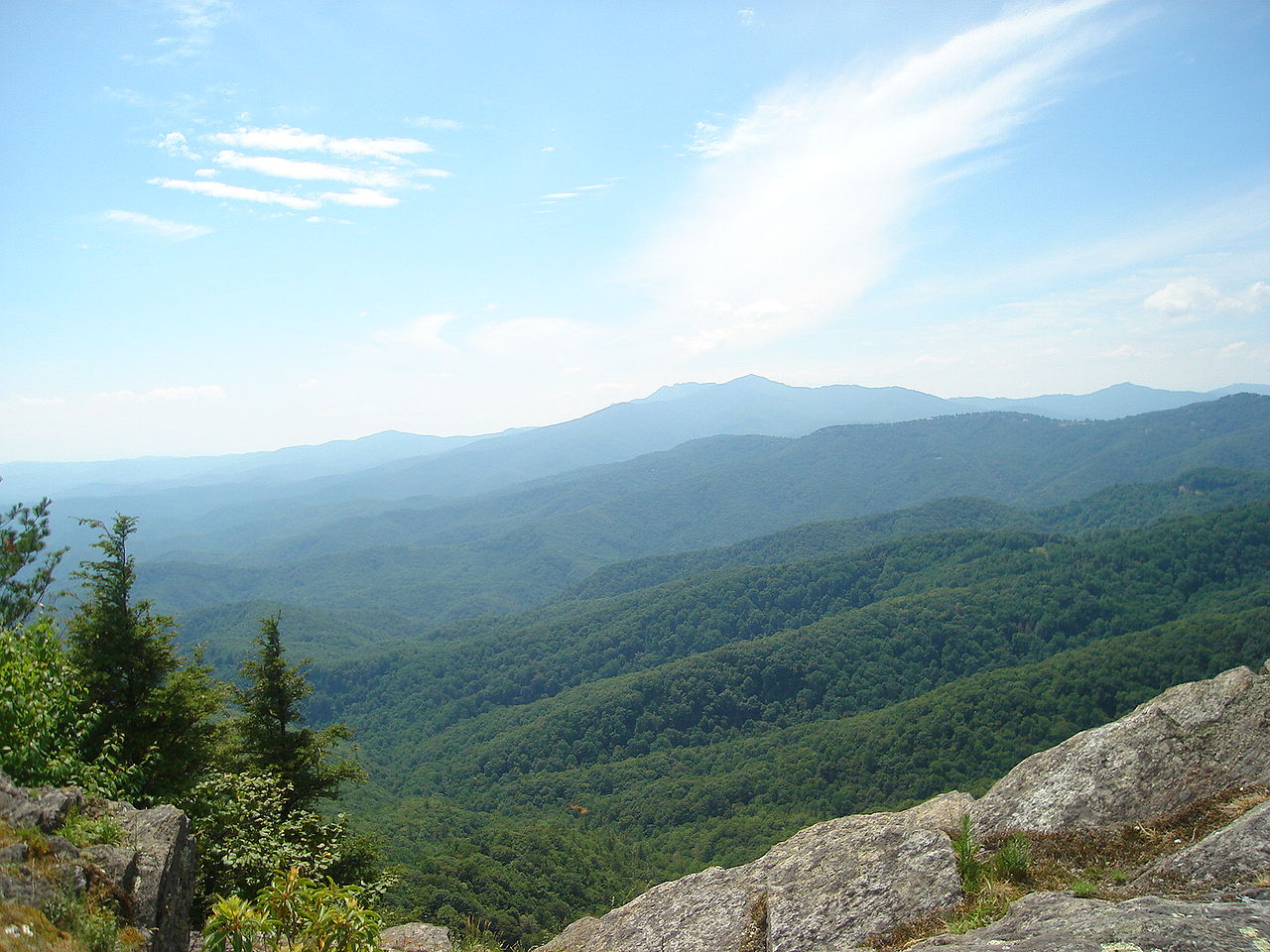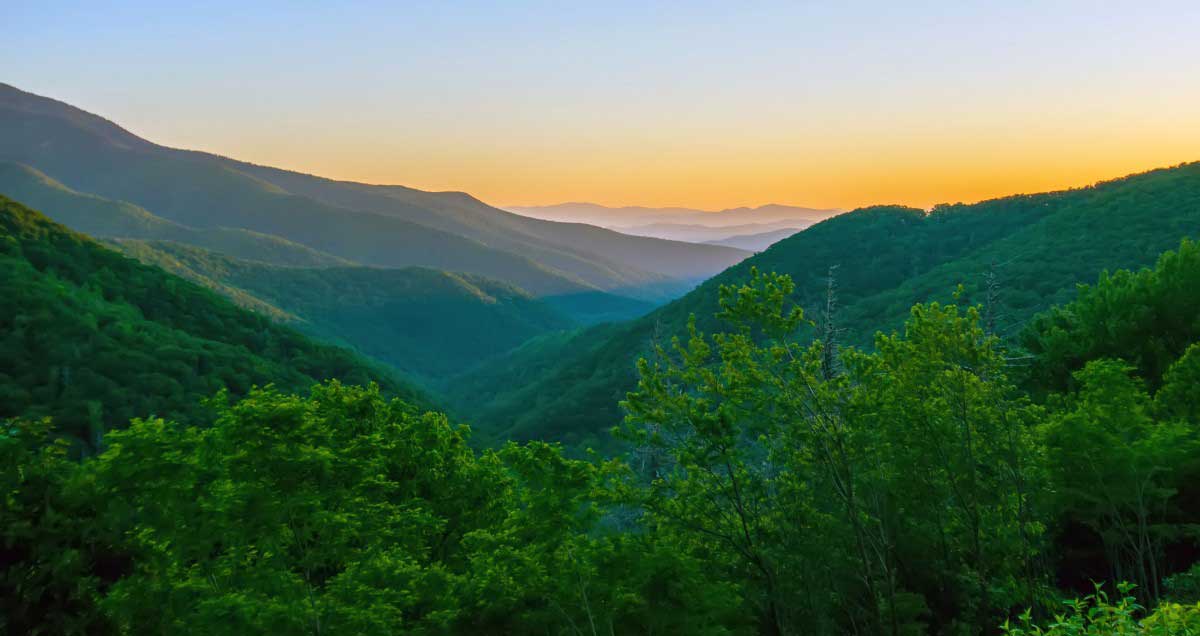36 Entertaining Fun Facts about the Blue Ridge Mountains
Fun facts about the Blue Ridge Mountains make us knowledgeable. The Appalachian Mountains range includes the Blue Ridge Mountains, which are a physiographic province of the greater Appalachian Mountains range. In this article, we will share more fun facts about the Blue Ridge Mountains like this.
The mountain range spans 550 miles from southern Pennsylvania to Maryland, West Virginia, Virginia, North Carolina, South Carolina, Tennessee, and Georgia in the eastern United States. The northern and southern physiographic areas of this province separate around the Roanoke River gap. The Great Appalachian Valley is to the west of the Blue Ridge, between it and the majority of the Appalachians, and is bounded on the west by the Ridge and Valley province of the Appalachian range.
When viewed from afar, the Blue Ridge Mountains are known for their bluish hue. The “blue” of Blue Ridge comes from the isoprene emitted into the atmosphere by the trees. This contributes to the mountains’ unique hue and characteristic haze.
There are two main national parks in the Blue Ridge province: Shenandoah National Park in the north and the Great Smoky Mountains National Park in the south. George Washington and Jefferson, Cherokee, Pisgah, Nantahala, and Chattahoochee are among the eight national forests.
The Blue Mountain Parkway, a 469-mile (755-kilometer) beautiful route that links the two parks and runs along the ridge crest-lines, as does the Appalachian Trail, is a 469-mile (755-kilometer) scenic highway that connects the two parks and runs along the ridge crest-lines.
Although the term “Blue Ridge” is sometimes used to refer only to the Appalachian Mountains’ eastern edge or front range, the geological definition of the Blue Ridge province encompasses the Great Smoky Mountains, Great Balsams, Roans, Blacks, Brushy Mountains (a “spur” of the Blue Ridge), and other mountain ranges westward to the Ridge and Valley area.
Fun facts about the Blue Ridge Mountains
Here you will find 36 fun facts about the Blue Ridge Mountains
1. The Cohutta Wilderness, which covers 40,000 acres in Fannin County, is the biggest wilderness region east of the Mississippi River.
2. Crabtree Falls is a famous tourist destination in Nelson County, about six miles from milepost 27 on the beautiful Blue Ridge Parkway. The Falls consists of a sequence of five large falls and a handful of lesser cascades that total 1,200 feet in length.
3. Crabtree Falls is the tallest vertical-drop cascading waterfall east of the Mississippi River, located on the Blue Ridge Parkway.
4. With 3,560 feet of elevation, Sassafras Mountain is the highest peak in South Carolina.
5. Mt. Mitchell, the tallest mountain east of the Mississippi, is located on the Blue Ridge Parkway.
6. The Appalachian Trail has been hiked in fewer than 50 days by speedsters.
7. Given that the typical hiker’s speed on level ground is around three miles per hour, it’s no surprise that a thru-walk might take up to seven months.
8. The Blue Ridge Parkway connects the Shenandoah National Park and the Great Smoky Mountains National Park, going over 469 miles of hilly terrain, and was built as part of the New Deal to bring Americans back to work following the Great Depression.
9. The Blue Ridge Parkway is the Appalachia region’s longest and tallest continuous road. Richland Balsam’s elevation ranges from 649 feet to a daring 6,047 feet.
10. Along the Parkway, there are 47 National Heritage Areas. Ashe, Buncombe, Clay, Polk, and Yadkin counties are among them.
11. The rising of the Earth’s tectonic plates 1.1 billion to 250 million years ago formed the Blue Ridge, which is part of the Appalachian range.
12. Some say the unusual stones originated when fairies heard about Christ’s crucifixion or Cherokees grieved on the Trail of Tears. Others believe the crystals are exposed due to erosion.
13. The Great Smoky Mountains are a mountainous region in the southeast United States that rises along the Tennessee–North Carolina boundary.
14. The Blue Ridge Mountains’ “autumn foliage” is one of the most spectacular sights in the world.
15. Thousands of tourists go to the region each autumn to see the leaves change color.
16. Aside from Mt. Mitchell, the Blue Ridge Parkway is home to Linville Gorge, which is the deepest gorge in eastern America.
17. While the Blue Ridge Parkway has many sights to see, Linn Cove Viaduct is THE Blue Ridge Parkway experience.
18. The Blue Ridge Mountains are among the world’s oldest, dating back over a billion years, second only to South Africa’s Barberton greenstone belt.
19. The Blue Ridge Mountain physiographic province encompasses a large number of noteworthy peaks.
20. Speed racers beware: the Parkway’s 469-mile length has a speed restriction that seldom exceeds 45 mph and is typically lower.
21. The region’s peak autumn foliage season is usually from mid-October to early November.
22. The Blue Ridge Parkway weaves its way through the Blue Ridge Mountains’ spine, providing visitors with several exceptional and ideal photo possibilities.
23. The park was established by the United States Congress in 1934, and President Franklin D. Roosevelt dedicated it in 1940. The park is one of the largest protected areas in the eastern United States, with 522,419 acres.
24. Typically, a thru-hike of the Appalachian Trail takes five to seven months.

25. With over 1,600 plant species – 80 percent of which are wildflowers – the Blue Ridge is also home to a variety of spring wildflowers. The following are some of the most beautiful flowers to see in the Blue Ridge:
Violets
Lady’s slippers
Trillium
Black-eyed Susans
Bloodroot
Bee balm
Bluets, AND
Spring beauty
26. Mount Rogers (Virginia’s highest point), Sassafras Mountain (South Carolina’s highest point), Brasstown Bald (Georgia’s highest point), Stony Man, Hawksbill in Virginia, and Grandfather Mountain in North Carolina are all prominent Blue Ridge peaks.
27. Nine federally listed or endangered species can be found along the Blue Ridge Parkway. The Southern Flying Squirrel is one of them.
28. The Sassafras Mountain is located in Pickens County, North Carolina, about 25 miles northwest of Greenville, in the Blue Ridge, which is a section of the Appalachian Mountains.
29. Ancient granitic charnockites, metamorphosed volcanic deposits, and sedimentary limestone make up the majority of the Blue Ridge Mountains.
30. The native Powhatan name for the Blue Ridge was Quirank, according to the English who colonized colonial Virginia in the early 17th century. Various tribes, including the Siouan Manahoacs, Iroquois, and Shawnee, hunted and fished at the foot of the Blue Ridge.
31. The Blue Ridge Mountains and the Shenandoah River (both in the state’s Eastern Panhandle) are prominently mentioned in West Virginia’s state anthem, “Take Me Home, Country Roads,” by John Denver.
32. Laurel and Hardy, an early 20th-century comedy team, included the tune The Trail of the Lonesome Pine (song) in their 1937 film “Way Out West,” which included the phrase “In the Blue Ridge Mountains of Virginia.”
33. The Army of Northern Virginia, under the leadership of Robert E. Lee, sneaked across the Potomac to commence the second invasion of the North during the American Civil War’s Gettysburg Campaign in 1863. They advanced slowly through the Blue Ridge, utilizing the mountains to hide their movements until they were severely beaten at the Battle of Gettysburg in Pennsylvania and forced to retreat.
34. Over 400 million years ago, the Silurian Period initiated the formation of the Blue Ridge Mountains. North America and Europe collided around 320 million years ago, pushing the Blue Ridge higher.
35. South of Baffin Island, the Blue Ridge comprises the highest mountains in eastern North America. Approximately 125 peaks rise above 5,000 feet (1,500 meters).
36. Mt. Mitchell in North Carolina, at 6,684 feet, is the highest mountain in the Blue Ridge (and the whole Appalachian range) (2,037 m).
Did you enjoy these fun facts about the Blue Ridge Mountains?
More Interesting Articles
- 25 Awesome Lake Tahoe Things to Do in Weekend
- 7 Awesome Places for Thrilling Lake Tahoe Skiing
- Top 10 Stunning Lake Tahoe Beaches to Visit
- To Do in Glen Canyon National Recreation Area
- Glen Canyon National Park Travel Guide
- 17 Travel Attractions of the Lake Tahoe City
- 32 Cozy Lake Tahoe Hotels, Resorts, and Lodges
- Top 10 Natural Wonders of the US to See in Life
- 11 To-Do while Traveling Lake Tahoe in Summer
- Monument Valley Tours – How to Plan
- 40 Monument Valley Facts Everyone Should Know
- 6 Places for Thrilling Monument Valley Camping
- List of Monument Valley Hotel You can Check
- 13 Memorable Things to Do in Monument Valley
- Grand Canyon National Park Travel Guide
- Monument Valley Transportation Guide
- Monument Valley Visitor Center
- Southeastern Utah Sights – Must-See Sights in Utah
- Monument Valley Scenic Drive – A Complete Guide
- 10 Beautiful Utah National and State Parks
Tags
blue ridge fun facts
interesting facts about blue ridge mountains
